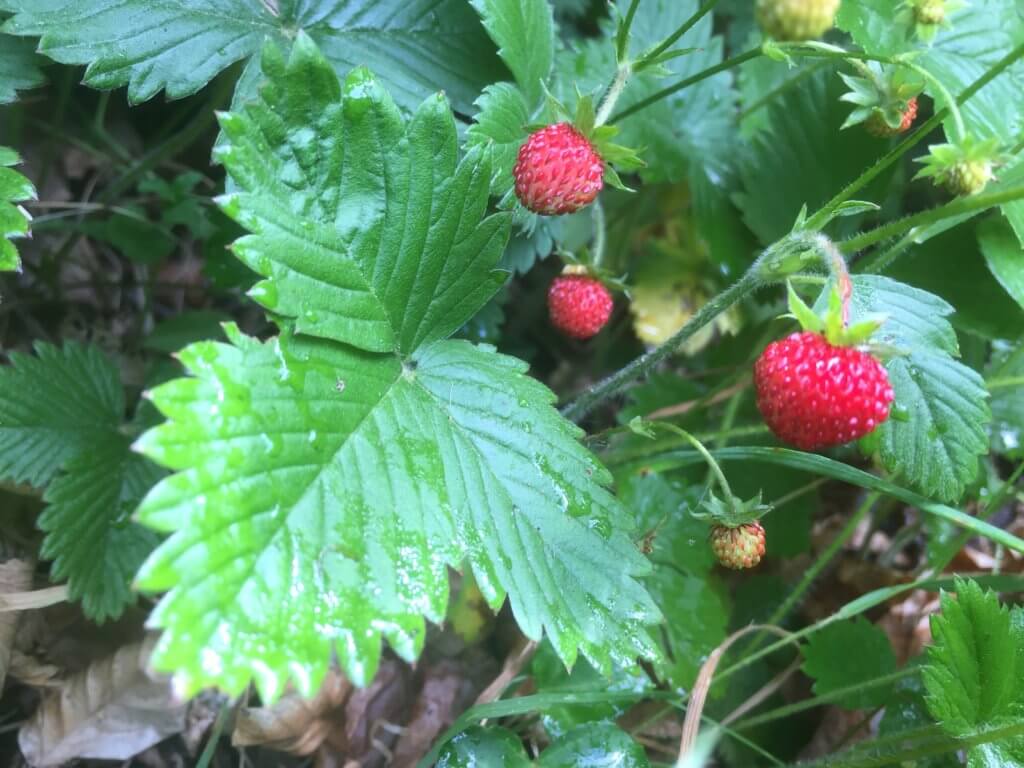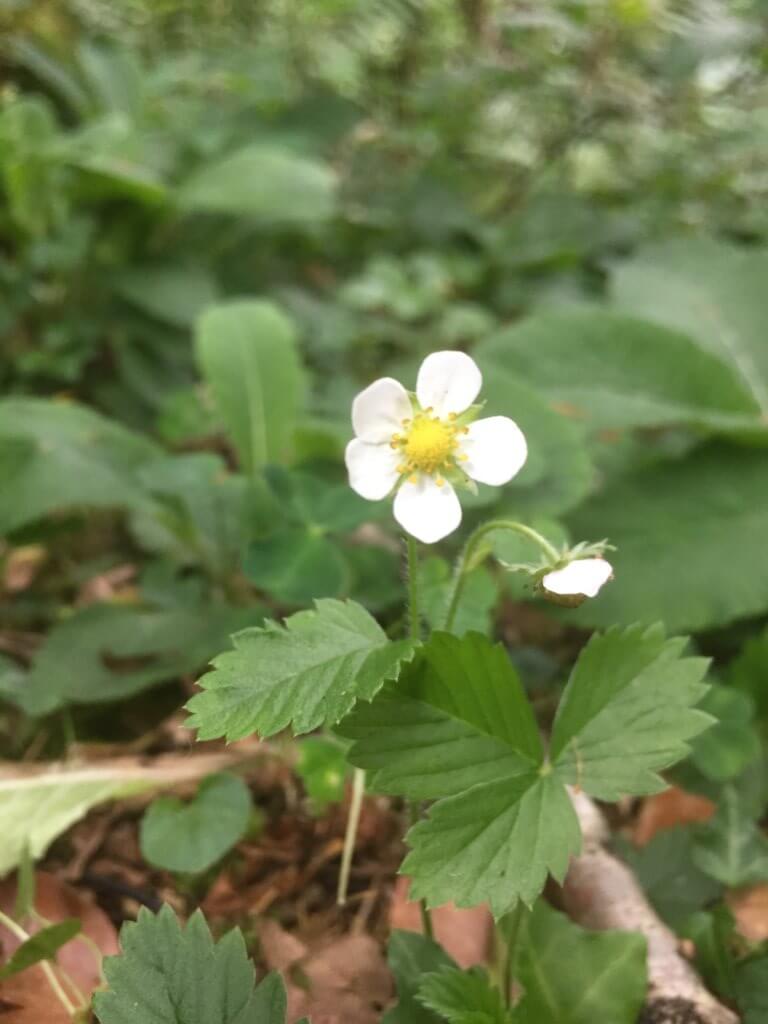
This is a delightful plant, especially at this time of year when there is every chance it will be dripping with irresistible red berries. It has the sharply-serrated, trifoliate leaves typical of all strawberries, and delicate white flowers which give way to the perfect, albeit tiny, red fruits. In all respects it is a diminutive version of the more robust cultivated strawberry.
It tends to grow in small clumps and favours poorer soils where it is not swamped by more vigorous competitors. In much of our nutrient-soaked countryside it risks drowning under tall grasses and Cow Parsley, and the berries can be hidden from view even if the plants cling to survival.
The fruits are often available for just a few weeks each year (which adds to their appeal), though it is possible to extend the season if you can find them growing in different situations. Much like Bluebells and Primroses, plants growing within the shade of woodland can be well behind those in a more open situation. To prove the point these two photos were taken on the same day. Within a local wood the plants are flowering and the berries have yet to develop. Nearby, on a sun-drenched roadside verge, the flowers are long gone – and the berries soon will be too.
The taste is just what you would expect from a strawberry – perhaps a little sweeter and subtler than the cultivated version but every bit as pleasant. You will need to pick several to get a good sense of the flavour. And perhaps 10-12 would be needed to match the volume of just one typically-sized supermarket strawberry.
To end with a quote stolen from John Wright’s excellent Hedgerow book in the River Cottage series – ‘Doubtless God could have made a better berry, but doubtless God never did.’ So said a Dr William Butler in the seventeenth century and, some 400 years later, it’s hard to argue with him.

Seven francs a kilo in 1936
Filbert – ah yes, I remember it well… (with a Maurice Chevalier accent)